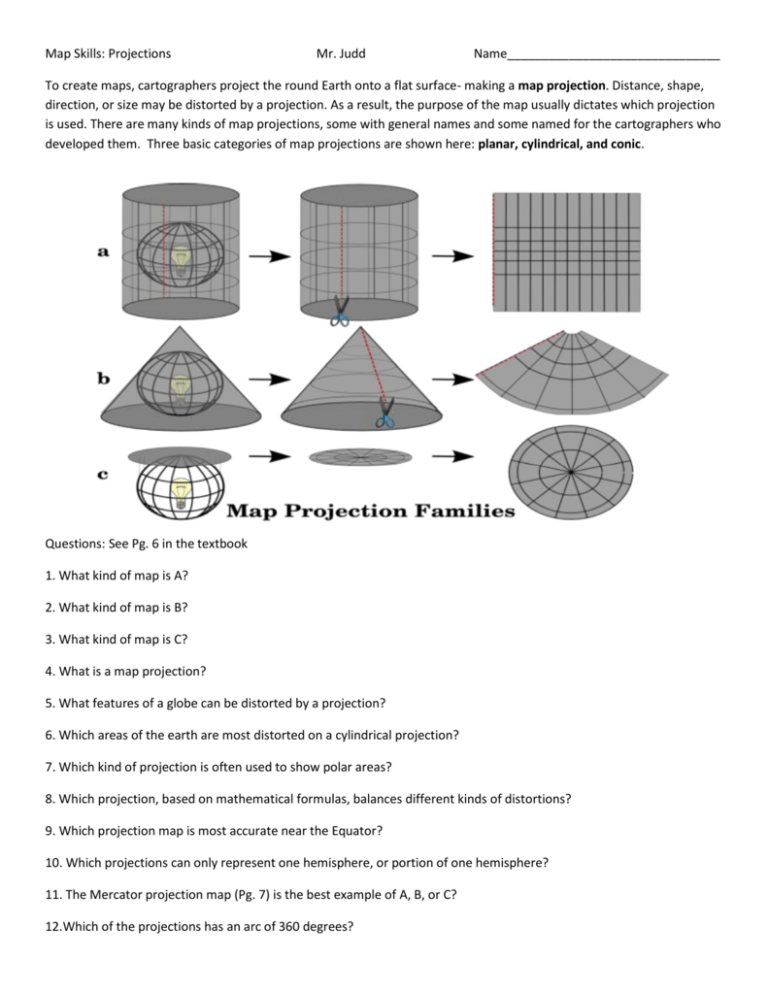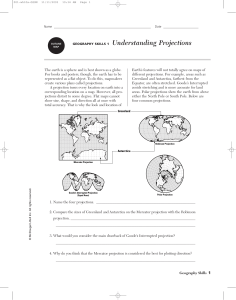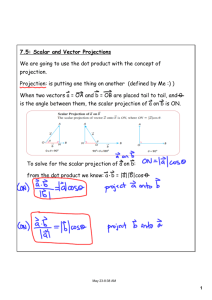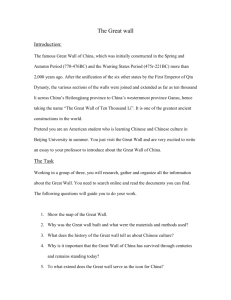Map Projections - Streetsboro City Schools
advertisement

Map Skills: Projections Mr. Judd Name_______________________________ To create maps, cartographers project the round Earth onto a flat surface- making a map projection. Distance, shape, direction, or size may be distorted by a projection. As a result, the purpose of the map usually dictates which projection is used. There are many kinds of map projections, some with general names and some named for the cartographers who developed them. Three basic categories of map projections are shown here: planar, cylindrical, and conic. Questions: See Pg. 6 in the textbook 1. What kind of map is A? 2. What kind of map is B? 3. What kind of map is C? 4. What is a map projection? 5. What features of a globe can be distorted by a projection? 6. Which areas of the earth are most distorted on a cylindrical projection? 7. Which kind of projection is often used to show polar areas? 8. Which projection, based on mathematical formulas, balances different kinds of distortions? 9. Which projection map is most accurate near the Equator? 10. Which projections can only represent one hemisphere, or portion of one hemisphere? 11. The Mercator projection map (Pg. 7) is the best example of A, B, or C? 12.Which of the projections has an arc of 360 degrees? Mercator Projection Robinson Projection Goode’s Interrupted Projection Questions: 1. What are some differences between the Mercator and Robinson Projection maps? 2. Which map looks as if it has been peeled like an orange? 3. What is a rhumb line? For this question you will have to research on line. THE INFLUENCE OF MAP PROJECTIONS ON OUR WORLD VIEW SHEET 5 1. How do map projections that offer differing sizes, positions, and shapes of land masses affect our view of the world? 2. Consider the map projection below. How does this map differ from your perception of the world? 3. Why do maps always show either North America or Europe in the middle?





